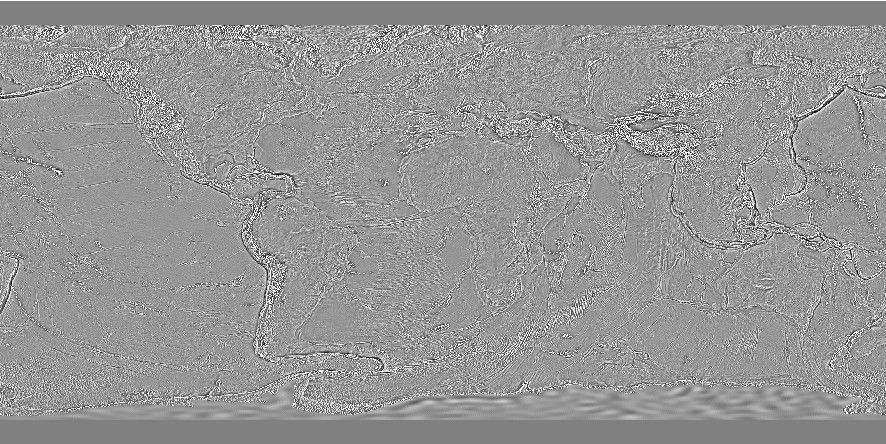pygmt.datasets.load_earth_vertical_gravity_gradient
- pygmt.datasets.load_earth_vertical_gravity_gradient(resolution='01d', region=None, registration=None)[source]
Load the IGPP Earth Vertical Gravity Gradient dataset in various resolutions.

IGPP Earth Vertical Gravity Gradient dataset.
The grids are downloaded to a user data directory (usually
~/.gmt/server/earth/earth_vgg/) the first time you invoke this function. Afterwards, it will load the grid from the data directory. So you’ll need an internet connection the first time around.These grids can also be accessed by passing in the file name @earth_vgg_res[_reg] to any grid processing function or plotting method. res is the grid resolution (see below), and reg is the grid registration type (p for pixel registration or g for gridline registration).
The default color palette table (CPT) for this dataset is @earth_vgg.cpt. It’s implicitly used when passing in the file name of the dataset to any grid plotting method if no CPT is explicitly specified. When the dataset is loaded and plotted as an
xarray.DataArrayobject, the default CPT is ignored, and GMT’s default CPT (turbo) is used. To use the dataset-specific CPT, you need to explicitly setcmap="@earth_vgg.cpt".Refer to https://www.generic-mapping-tools.org/remote-datasets/earth-vgg.html for more details about available datasets, including version information and references.
- Parameters:
resolution (str) – The grid resolution. The suffix
dandmstand for arc-degrees and arc-minutes. It can be"01d","30m","20m","15m","10m","06m","05m","04m","03m","02m", or"01m".region (str or list) – The subregion of the grid to load, in the form of a list [xmin, xmax, ymin, ymax] or a string xmin/xmax/ymin/ymax. Required for grids with resolutions higher than 5 arc-minutes (i.e.,
"05m").registration (
Literal['gridline','pixel',None], default:None) – Grid registration type. Either"pixel"for pixel registration or"gridline"for gridline registration. Default isNone, means"gridline"for all resolutions except"01m"which is"pixel"only.
- Returns:
grid (
xarray.DataArray) – The Earth vertical gravity gradient grid. Coordinates are latitude and longitude in degrees. Units are in Eotvos.
Note
The registration and coordinate system type of the returned
xarray.DataArraygrid can be accessed via the GMT accessors (i.e.,grid.gmt.registrationandgrid.gmt.gtyperespectively). However, these properties may be lost after specific grid operations (such as slicing) and will need to be manually set before passing the grid to any PyGMT data processing or plotting functions. Refer topygmt.GMTDataArrayAccessorfor detailed explanations and workarounds.Examples
>>> from pygmt.datasets import load_earth_vertical_gravity_gradient >>> # load the default grid (gridline-registered 1 arc-degree grid) >>> grid = load_earth_vertical_gravity_gradient() >>> # load the 30 arc-minutes grid with "gridline" registration >>> grid = load_earth_vertical_gravity_gradient( ... resolution="30m", registration="gridline" ... ) >>> # load high-resolution (5 arc-minutes) grid for a specific region >>> grid = load_earth_vertical_gravity_gradient( ... resolution="05m", ... region=[120, 160, 30, 60], ... registration="gridline", ... )